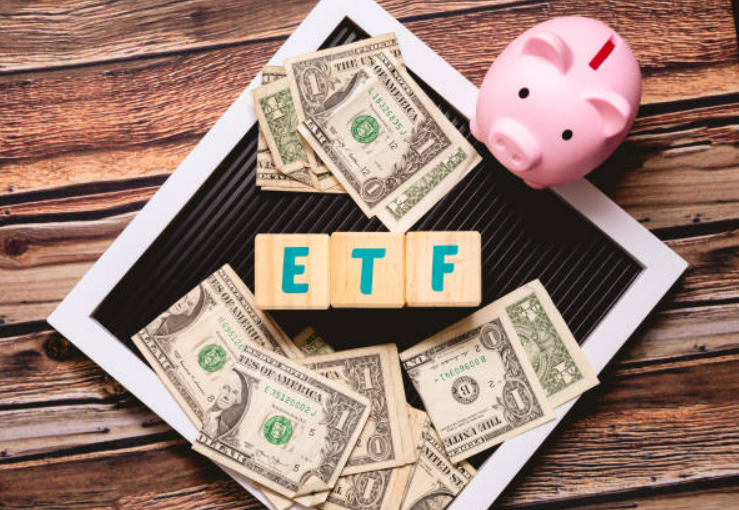
Aria Thomas
Feb 05, 2024 14:43

While it's difficult to find someone who hasn't heard about cryptocurrencies, their scientific counterpart is not as well known. It all comes down to quantum money. Both technologies use cryptography to offer a secure value transfer channel, therefore the principle is comparable. The quantum money system, on the other hand, is based on quantum physics and employs 'quantum bits' or 'qubits,' hence, unlike classical computers, it no longer relies on the 0-1 system. In quantum computing, 0 and 1 can coexist or possibly form a type of combination. Furthermore, this innovative method allows for many ongoing calculations that might differ even while the input remains constant. As a result, it is far more dependable and resistant to counterfeit than previous methods.
The quantum financial system is a great development that has been in the works for many years.
The quantum financial system (QFS) is a new financial technology that has never before opened up the world of money.
Quantum banking revolves around quantum-secure blockchain encryption, quantum computing, and quantum cryptography.
According to the IMF, "quantum computers have the potential to revolutionize industries and fields that require significant computing power, such as modeling financial markets, developing new effective medicines and vaccines, empowering artificial intelligence, and creating a new and secure mode of communication (quantum Internet)."
The quantum financial system employs blockchain technology to democratize wealth generation and quantum encryption to safeguard your funds.
This technology allows banks and enterprises to communicate data through an unhackable quantum network.
The quantum financial system is built around two quantum computers that collaborate to form a quantum network.
The quantum financial system outperforms the traditional financial system in terms of speed and efficiency.
It's also less expensive because there are no intermediaries or transaction fees to contend about. If you're familiar with cryptocurrency, you've probably heard it before.
It will include a global network for the transmission of asset-backed money.
Has the potential to replace the Centrally Controlled SWIFT System in the United States.
Can shield all parties involved from corruption and manipulation inside the banking system.
Ensures that banks are monitored and safeguarded in relation to the transfer money process's agreed-upon contract.
Independent of the current centralized structure.
It is not a cryptocurrency, but rather a digital currency backed by assets.
QFS is frequently stored and operated on quantum computing-based satellite servers. This is due to the fact that QC is more secure and sophisticated due to its processing style. Quantum computing combines two or more quantum states to produce another state by shooting electrons through semiconductors with a programmable pulse of light, resulting in the fastest level of speed. This is why quantum computers can store far more information and perform much faster than current-generation computers.
A QFS will typically issue a digital number to every dollar, euro, or yen located in every bank account throughout the world and then monitor it in real time. The physical GPS position between transmitter and receiver will be configured to guarantee impenetrable security. This means you'll know precisely where it went, when it was transferred, who provided it with your login details, and which account got it. The QFS AI will monitor fluctuation and regulate all boundary conditions. This implies that until the highest degree of permission is provided, only AI algorithms will be able to govern the global financial network.

Only gold-backed currencies with a digital gold certificate can participate in QFS transactions. A serial number will be assigned to the gold certificate as a reference to a piece of gold kept in reserve to back the currency. It is impossible for it to be stolen or removed from the safe vaults where it is kept. This is where the term "gold-backed currency" originates from; it must relate to a piece of gold in the vault that is supporting it.
Asset-backed currencies are those that are founded on assets inside the nation of origin. These assets are regarded as a rationale for determining the quantity of currency accessible in a country, but all denominations of currency must be put into the QFS and granted a gold certificate in order to be active within the QFS. If the assets are mined or removed from the ground, they will be traded on the market in the same way that any other commodity is.
In the last 50 years, the financial world has changed dramatically. Until recently, the most frequent method of payment when purchasing something was cash. We now have a plethora of possibilities. Pay using a debit/credit card or a bitcoin wallet app on your smartphone. You have an option.
Today, the world's 30 largest banks together handle more than $55 trillion. According to the Securities Industry and Financial Market Association, the global bond market is worth more than $119 trillion, with the US market around $46 trillion.
Every second, a great number of financial services operations (ranging from securities pricing to risk analysis) are carried out in this complicated industry. Each action needs the capacity to evaluate both short-term and long-term effects.
Financial organizations use complex algorithms and machine learning models to calculate statistical probability. However, as we all saw during the 2008 financial crisis, these models are not totally correct.
In many aspects, contemporary technology still has to grow before it can deliver on its promises. As a result, some financial institutions are exploring new processors that use quantum physics rules to handle enormous amounts of data at unprecedented speeds. The options are limitless.
If you've ever questioned if such a financial system could exist, the answer is yes. Even though it seems like science fiction to you, the QFS (Quantum Financial System) is a very real concept. Stephen Wiesner proposed the concept of adopting quantum money in 1970. However, it was only lately that Chinese engineers chose to bring it to life, prompting others to follow suit. The primary purpose of QFS is to replace central banking and ensure the accurate and constant integrity of money flow.
Quantum banking is a contemporary type of banking that leverages blockchain technology to build a platform for worldwide peer-to-peer payments. The capacity of quantum banking to deliver real-time transactions with no transaction fees, transparent credit ratings, and quick transaction processing are application cases. This quantum banking system is significantly more efficient since they do not need to retain records on paper or manually enter transactions into a system like a traditional bank. The quantum blockchain provides an effective means to function as an intermediary between asset transfers by digitally signing and confirming transactions without the involvement of a third party.
A sort of digital money is quantum currency. It has no physical form, unlike traditional currencies, and only exists in digital form on computers or smart devices. It may be moved swiftly and securely without the assistance of a bank or other middleman. It is more difficult to forge than traditional currencies because it employs encryption mechanisms similar to those used to safeguard credit card information on the internet. The applications of quantum currency are still being researched and investigated. Nonetheless, it has been proposed that quantum cryptography may overcome the problem of hacking into encrypted data since quantum key distribution may provide legitimate communication between two parties without the possibility of eavesdropping. There are several advantages to using quantum cryptocurrency, including:
Anonymity
Transaction costs are minimal.
Quick transaction times
It is also more effective than traditional computers in analyzing data, leading to advancements in data analysis.
The Quantum Financial System's purpose is to improve the present financial system in order to encourage the progress of every single country, especially third-world countries. The current system tends to produce a debt crisis, with rising interest rates leading to increasing difficulty in repaying debt. Countries that are in debt will be able to repay it by offering something worthwhile if QFS is implemented. They can, for example, export natural materials and resources.
Consider third-world nations in Africa, Asia, and the Middle East, all of which have significant foreign loans and depressed currencies. Despite the fact that they eventually fulfill their obligations, the value of their currencies deteriorates. As a result, many of them are forced to borrow more, perpetuating the vicious cycle. However, with QFS, these countries may sell excess natural resources such as gold or oil in order to realize the full benefits and financial power of their resources.
To participate in the QFS, each country must be GESARA (Global Economic Security and Reform Act) compliant; otherwise, they would be barred from international commerce. A specific quantitative method is utilized to calculate the quantity of currency available in the QFS that will be gold-backed. When the formula is used, the outcome will provide a fair valuation for each country's assets when compared to one another.
When the price of gold rises, the value of the currency rises as well. As a result, the par value of all currencies remains unchanged. The method takes into account physical assets, the country's economy, its population, which is one of the country's assets, and a variety of other characteristics to estimate the worth of the country's currency. This method should be used by each country so that all currencies are equal to one another.

Because of the formula and the common worth of all gold, one country's currency must have the same value as another country's currency. This is known as the Global Currency Reset, and it involves the resetting of all currencies to parity with all other global currencies, with each one bearing a gold certificate to confirm its legitimacy. To guarantee the correct operation of the QFS, each nation is required to employ the reset formula and implement the global standard.
Over the previous several decades, we've seen the financial industry affected by growing tech-based solutions like Artificial Intelligence, Blockchain, Open Banking, or the introduction of new directives like PSD2. Although the quantum currency is still in its early stages of development in the financial world, it has already brought about substantial improvements.
Those financiers who choose to gamble on quantum computing stay ahead of the competition and are likely to provide fairly promising outcomes. As you read this, quantum analysts and professionals are putting the QFS into practice in a variety of financial organizations. They can rapidly learn that quantum-based solutions are game changers in safe information flow by testing algorithms and evaluating their effect. This technology allows banks and enterprises to communicate data through an unhackable quantum network. So, despite the fact that other instruments, such as Blockchain or digital identification, were developed to solve the same requirement, some institutions are already moving a step farther and opting for quantum instead.
While doubling the power of a normal computer needs about double the number of transistors working on a job, doubling the power of a quantum computer requires only one qubit. As a result, it might be quite helpful for first-time buyers.
In the coming decade, quantum computing may enable financial institutions to tackle highly particular business challenges and re-engineer some operational procedures.
Customer targeting and prediction modeling: Quantum computers excel in detecting hidden patterns in complicated data structures, performing classifications, and making accurate forecasts.
Financial institutions lose $20-$45 billion in income each year as a result of fraud and poor service management procedures. Existing fraud detection techniques are untrustworthy. They produce 80% false positives, putting the banking industry at danger the majority of the time.
Quantum computing may provide a decisive advantage in the fight against payment fraud. The strength of exponential speed, obtained from quantum superposition and entanglement, might aid in re-evaluating numerous potential solutions for optimizing fraud detection systems.
Client management: Quantum computing has the potential to flawlessly simplify procedures and assist personnel in providing a faultless client experience.
Quantum computing has the ability to accelerate asset pricing models and nurture performance gains in portfolio management. It can do a plethora of optimization computations in a fraction of the time and without the need for approximations.
Its combinatorial optimization skills might assist investors in improving portfolio diversity, rebalancing portfolio assets based on market circumstances and end goals, and streamlining trade settlement processes.
A cryptocurrency (such as Bitcoin) is a digital currency that employs encryption to manage transactions and regulate the production of currency units. Quantum currency, on the other hand, is a transferable unit on a novel ledger technology known as quantum ledgers. Furthermore, the two differ in that quantum variations exist in physical form, making it more analogous to fiat currency than its crypto relatives. Payments are more efficient and better with quantum money since it is not controlled by a central bank. Consumers may make transactions across borders without worry of false charges or theft thanks to this technology. While quantum computing may seem similar to standard cryptocurrencies, it differs due to its foundation in quantum physics. The algorithms that power this form of currency are built with cutting-edge technology.
Quantum computing technology is still in its early stages. In reality, the majority of its advantages and uses are still speculative. As a result, the whole banking industry is faced with two options:
Either wait for technology to arrive or respond only when opportunities or risks are detected.
Alternatively, begin by interacting with the quantum environment, identifying use cases, and integrating quantum security solutions.
The second alternative appears to be preferable. Many investment banks and financial services holding firms, including JPMorgan Chase, HSBC, and Wells Fargo, have already begun to invest millions of dollars in quantum research and development initiatives.
A huge amount of research and technical work has gone towards the development of quantum algorithms with significant polynomial speedups in data-loading and data-processing subroutines.
So yet, no practical use of quantum computing with exponential speedup over classical computing has been created, however various interesting models have been presented.
IBM, for example, has packed 127 qubits onto its proprietary quantum-computing processor. Multiple layers of the processor house signal-carrying wires, allowing for exact readouts of the qubits. Although the technology is widespread in traditional chips, it is a significant accomplishment in the field of quantum computing.

It is projected that quantum computers will outperform traditional computers by the end of 2030. Tech behemoths such as IBM and Google are developing quantum devices capable of storing hundreds of quantum bits. IBM has made its ambitions clearer by providing a strategy for the development of quantum computers, which includes the goal of creating a 1000-qubit computer.
This will have a significant influence on several businesses, notably banking. Indeed, the financial industry is expected to be the first to gain from quantum computing in both the short and long term.
However, future advances in quantum computing within banking and financial organizations will be fraught with difficulties. Identifying which problems can be efficiently solved by quantum machines, improving the interface for better accessibility, upgrading infrastructure to accommodate this technology, and expanding interest in such quantum machines beyond an elite group of physicians and mathematicians are some of the challenges that must be addressed in the near future.
Overall, implementing quantum-based solutions is not a quick procedure. It's not like changing your software systems, where you just press a button and everything is done. It will be a lengthy trip, and it will depend not just on the banking sector's capacity to recognize problems and adapt infrastructure, but also on its ability to integrate employees and customers in this process.
Quantum finance is a subfield of econophysics, a heterodox multidisciplinary academic subject that focuses on applying ideas and methodologies to complicated economic problems.
Applying quantum technology to financial challenges, particularly those involving nonlinear dynamics, uncertainty, or stochastic processes, can be tremendously beneficial to early adopters. Some of the specific benefits quantum computing can provide in the future decades include faster market volatility response, more precise risk analysis, and the use of behavioral data to promote consumer engagement.

Mar 18, 2022 15:57

Mar 21, 2022 15:08